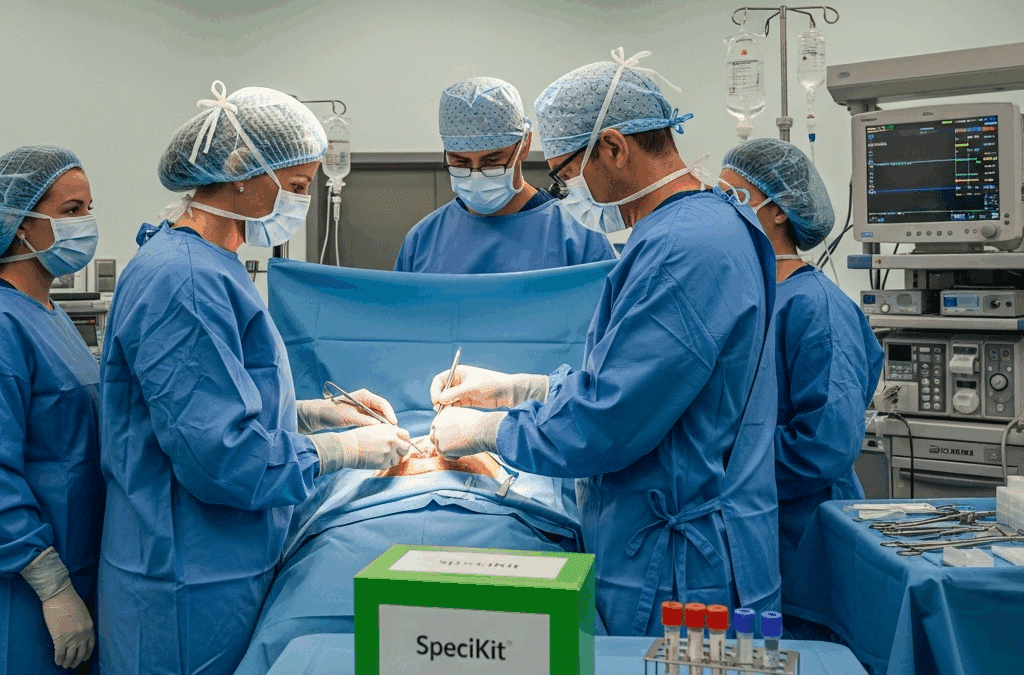Yes, as long as the process is started at the time of biopsy. For many patients, a biopsy is the very first opportunity to obtain tumor tissue, and it’s the best time to consider cryopreservation. If your biopsy tissue is not cryopreserved at the time of your biopsy, it was likely preserved by the inferior FFPE method and you should strongly consider blood cryopreservation as a back up and it is best taken prior to any chemo treatments.
Here’s why and what to keep in mind:
Cryopreserve Tissue from a Biopsy:
- Feasibility: While a surgical resection (removal of the entire tumor) usually yields a larger quantity of tissue, biopsies (e.g., core needle biopsy, excisional biopsy, incisional biopsy) can certainly provide enough material for cryopreservation.
- Timing is Key: Just like with surgical samples, the most critical factor is the speed of processing. Once the biopsy tissue is removed from your body, it needs to be immediately transferred to a cryopreservation medium to preserve cell viability and molecular integrity. Any delay (known as “warm ischemia time”) can degrade the quality of the sample.
- Coordination is Crucial: If you intend to cryopreserve tissue from a biopsy, you must discuss this with your doctor and the biopsy team before the procedure. They will need to coordinate with the pathology lab or a specialized biobanking service to ensure the sample is handled correctly and transported quickly for cryopreservation, rather than being immediately sent for standard formalin fixation.
- Quantity Matters (Sometimes): A core needle biopsy provides a smaller sample than a surgical resection. While often sufficient for molecular analysis, if you’re hoping for applications that require a larger volume of live cells (e.g., growing multiple organoids for extensive drug testing), a larger biopsy or a surgical sample might be more ideal if available. However, a small biopsy sample is still far better than none for cryopreservation.
Why Cryopreserve Tissue from a Biopsy?
- Early Insights: A biopsy is often the first definitive diagnosis. Cryopreserving this initial tissue provides an untouched “snapshot” of your tumor’s biology before any systemic treatments (like chemotherapy or radiation) potentially alter its characteristics.
- Personalized Treatment Guidance: The cryopreserved biopsy tissue can be used for advanced molecular profiling, genetic sequencing, and potentially ex vivo drug sensitivity testing to help guide your initial treatment decisions.
- Backup for Future Needs: It serves as a vital resource for future research, understanding treatment resistance, or exploring new therapies if your cancer recurs or progresses.
Blood as a Backup Option for Genetic Material
If for some reason you cannot cryopreserve tumor tissue, or if your biopsy yields insufficient tissue, preserving a blood sample can serve as an invaluable backup for genetic information.
Here’s why and how:
- Source of Germline DNA: Your blood contains your “germline” DNA, which is the genetic blueprint you inherited from your parents and is present in every non-cancerous cell in your body. By comparing the DNA from your tumor (if preserved) with your germline DNA from blood, scientists can identify somatic mutations (mutations specific to the cancer cells) versus inherited genetic predispositions.
- Circulating Tumor DNA (ctDNA): Blood also contains circulating tumor DNA (ctDNA), which are fragments of DNA shed by tumor cells into the bloodstream. While not living tissue, ctDNA can be analyzed to monitor disease progression, detect minimal residual disease, and identify mutations. Freezing a blood sample allows for future analysis of ctDNA using increasingly sensitive techniques.
- Accessibility: A blood draw is a much less invasive procedure than a tissue biopsy, making it a very accessible option for genetic preservation.
- When Tissue Preservation is Difficult: There are situations where obtaining enough high-quality tumor tissue for cryopreservation might be challenging:
- Small or Inaccessible Tumors: Some tumors are very small, in difficult-to-reach locations, or pose high risks for biopsy.
- Limited Biopsy Material: Even if a biopsy is performed, the amount of tissue obtained might be minimal and prioritized for immediate pathological diagnosis, leaving little for cryopreservation.
- Degradation Issues: If there are delays in processing the tissue, its quality for cryopreservation might be compromised.
- Patient Preference/Logistics: Sometimes, the logistical hurdles or costs associated with tissue cryopreservation are a barrier.
What to do:
- Discuss with Your Doctor: Always talk to your oncology team about your interest in preserving both tissue and blood samples. They can guide you on the feasibility, necessary coordination, and refer you to relevant services (e.g., specialized biobanks).
- Act Proactively: The best time to preserve both tissue (from biopsy or surgery) and blood is before treatment starts, to capture the most accurate pre-treatment biological profile.
In summary, yes, you can and often should explore cryopreserving tumor tissue from a biopsy. And critically, consider blood preservation as a valuable complementary or alternative strategy to ensure you have a comprehensive genetic resource for future insights into your cancer. You should ALWAYS cryopreserve tissue at your earliest opportunity.

Recent Comments